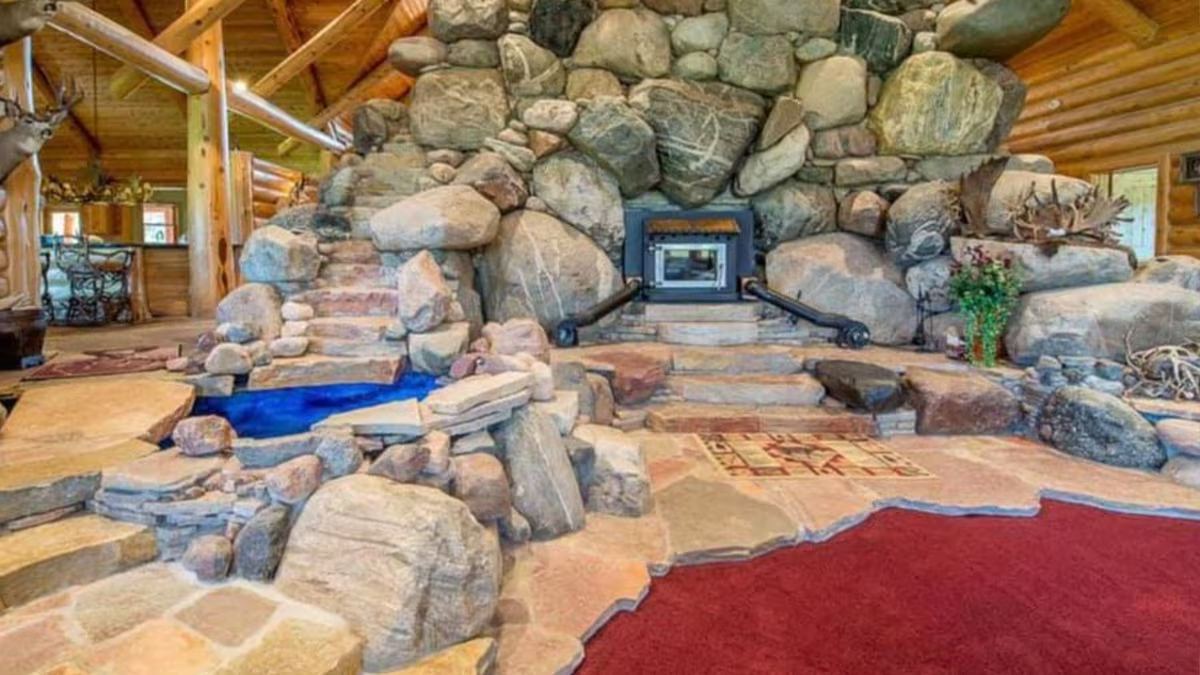When Digital Listings Go Wrong: The Viral Reality of Real Estate Nightmares
In an era defined by a hyper-competitive housing market and soaring property values, the search for a home has become less about finding a dream and more about navigating a digital minefield. Platforms like Zillow serve as the primary window into this market, exposing millions of listings daily. While the goal of these platforms is to streamline the buying process, they have also inadvertently created a cultural phenomenon: the viral sharing of listings so bizarre, poorly maintained, or strangely decorated that they defy belief.
Recently, a collection of over 50 Zillow listings gained widespread attention for being exceptionally awful—so much so that many viewers questioned their authenticity. These homes, often circulated through social media accounts dedicated to real estate oddities, highlight a stark reality: the democratization of listing photography and the sheer breadth of inventory available online means that every architectural misstep, staging failure, and questionable design choice is now instantly broadcast to a global audience. This trend offers a strange form of collective catharsis for prospective buyers frustrated by the current economic climate.
The Technology of Exposure: Zillow’s Role in Viral Real Estate
Zillow revolutionized how consumers interact with the housing market by providing unprecedented access to data and imagery. Before digital listing services, most buyers relied solely on carefully curated photos provided by real estate agents, often masking flaws. Today, the platform’s reliance on agents, homeowners, and sometimes even automated photography means that the quality control is highly variable. This variability is the engine of the “nightmare home” phenomenon.
Digital Curb Appeal vs. Reality
In the modern market, digital curb appeal is paramount. A listing’s success hinges on its primary photo and the first few images. When these images feature shocking design choices, the listing instantly shifts from a serious sales prospect to a piece of viral content. The platform, designed for efficient searching, ironically becomes a repository for the visually absurd.

The Algorithmic Amplification
While Zillow’s algorithms are designed to surface relevant properties, the social media ecosystem takes over when listings are truly unique. Accounts like “Zillow Gone Wild” thrive on sharing these aberrations, leveraging the platforms’ built-in virality mechanisms. This creates a feedback loop where the strangest listings receive the most attention, regardless of their actual market value or location. This digital scrutiny means that once a home is deemed a “nightmare,” its reputation is cemented online, often overshadowing any genuine selling points it may possess.
Anatomy of a Listing Failure: Why Homes Go Viral
The 50+ listings that achieved notoriety shared common characteristics that pushed them beyond merely being unattractive into the realm of the unbelievable. These failures generally fall into three categories:
1. Architectural and Structural Oddities
These are homes where fundamental design choices appear deeply flawed or outright dangerous. Examples frequently cited in viral compilations include:
- Unnecessary Interior Walls: Rooms divided by strange, non-load-bearing partitions serving no clear purpose.
- Bizarre Bathroom Placement: Toilets or showers placed in the middle of living rooms or kitchens, often with minimal privacy.
- Staircase to Nowhere: Doors opening directly onto steep drops or staircases ending abruptly.
- Themed Rooms Gone Wrong: Excessive, permanent installations dedicated to a single, often obscure, theme (e.g., medieval dungeons, spaceship cockpits).
2. Staging and Interior Design Disasters
These failures are often temporary but reflect a profound lack of understanding of how to market a property. They are arguably the most common source of viral content because they are instantly relatable and often humorous.
- Excessive Clutter: Listings photographed while filled with personal belongings, trash, or hoarded items, making it impossible to visualize the space.
- Shocking Color Palettes: Every surface painted in clashing, neon, or deeply saturated colors that distract from the home’s structure.
- Unsettling Decor: Mannequins, taxidermy, or strange dolls placed prominently, creating an atmosphere of unease.

3. Photographic Missteps
Sometimes, the home itself is merely average, but the listing photography is so poor that it renders the property unmarketable.
- Mirror Selfies: Agents or homeowners accidentally (or intentionally) appearing in mirrors while taking photos.
- Poor Lighting: Dark, blurry, or overexposed images that hide the true dimensions of the rooms.
- Inclusion of Unflattering Details: Close-ups of mold, broken fixtures, or highly personal items that should have been cropped or removed.
The Psychology Behind the Awful Listing
Why do these listings exist, and why are they so compelling to the public? The existence of these properties is often a collision of market forces and human factors.
Market Dynamics and Pricing
In a seller’s market, even the most flawed properties can command high prices, leading some sellers to believe that minimal effort is required. If a home is priced aggressively due to land value or location, sellers may skip professional staging or photography, relying on the market’s desperation to drive a sale. This is particularly true for properties intended for teardown or major renovation.
The Homeowner’s Blind Spot
Many of the most bizarre design choices—such as carpeted bathrooms or themed rooms—reflect the deep personal attachment and subjective taste of the current owner. When selling, homeowners often fail to recognize that what they consider charming or unique, the broader market views as a costly renovation project. A professional agent’s role is to bridge this gap, but not all listings benefit from expert guidance.

Key Takeaways for Buyers and Sellers
For buyers navigating the stressful 2025 market, these viral listings serve as a reminder that not all inventory is created equal. For sellers, they offer critical lessons in digital presentation.
For Prospective Buyers:
- Look Beyond the Photos: If a listing is bizarre, investigate its location and structural integrity. Sometimes, a poorly staged home hides a great investment opportunity.
- Factor in Renovation Costs: Use the shock value of the photos to negotiate a lower price, assuming the strange elements will require significant investment to neutralize.
- Use Humor as Coping: Engaging with the “Zillow Gone Wild” culture can be a healthy way to manage the stress and disappointment of a difficult market.
For Home Sellers:
- Invest in Professional Photography: High-quality, well-lit photos are the single most important factor in generating interest and avoiding viral ridicule.
- Prioritize Neutral Staging: Remove all personal items, declutter aggressively, and use neutral colors to allow potential buyers to visualize their own lives in the space.
- Address Obvious Flaws: Fix minor repairs and clean thoroughly. A dirty or damaged listing suggests deeper structural issues to a cautious buyer.
Conclusion: The Digital Mirror of the Housing Crisis
The phenomenon of the nightmare Zillow listing is more than just internet humor; it is a digital reflection of the current housing crisis. When inventory is scarce and prices are inflated, the public finds amusement in the listings that clearly demonstrate why some properties remain unsold or require substantial effort. The ability of platforms like Zillow to instantly catalog and disseminate these visual anomalies ensures that the trend of the “awful but real” listing will continue to provide both entertainment and a sobering look at the true state of the available housing stock.
What’s Next
As the real estate industry continues to integrate advanced technologies, including virtual reality tours and AI-enhanced staging, the pressure on sellers to present pristine listings will only increase. However, as long as human taste remains subjective and the market allows for quick, low-effort listings, the bizarre and unbelievable properties will continue to surface, offering a constant source of fascination for the digital real estate voyeur.
Original author: Adelaide May Ross
Originally published: November 8, 2025
Editorial note: Our team reviewed and enhanced this coverage with AI-assisted tools and human editing to add helpful context while preserving verified facts and quotations from the original source.
We encourage you to consult the publisher above for the complete report and to reach out if you spot inaccuracies or compliance concerns.

